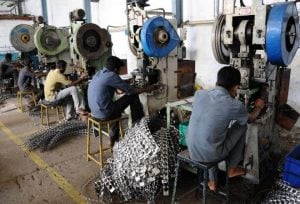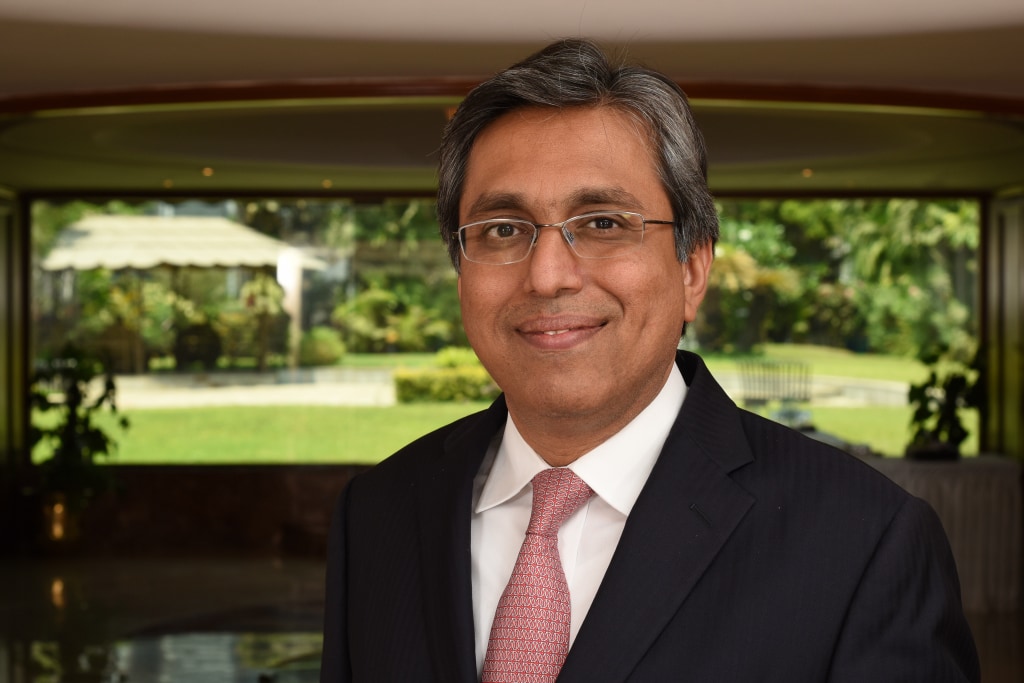Budget 2022: A clarion call to make India the highest growing economy

KV Prasad Jun 13, 2022, 06:35 AM IST (Published)
 Listen to the Article (6 Minutes)
Listen to the Article (6 Minutes)
Summary
The need of the hour is a well-designed, pragmatic budget; it should help draw the path for India to become a $5 trillion economy and a $1 trillion digital economy. Currently, the Indian economy is pegged at $3.1 trillion, being the sixth-largest economy after the US, China, Japan, Germany, and the United Kingdom.
CY’21 has been challenging yet remarkable in many ways. The pandemic strongly underscored the need for equanimous and robust digital interventions, in an era where developing countries could soundly pip developed countries based on their agility, flexibility, resilience, hunger to innovate and their focus on equality (digital, social, economic and others).
As digital technologies took the centre stage, India’s journey to become the digital talent hub began. We have been witnessing recovery and revival as a developing economy, which is further estimated to grow at 9.2 percent this fiscal after contracting 7.3 percent during FY2021. While micro, small, and medium enterprises were battered by COVID-19, large corporations fared better as they managed to cut costs, reduce debt, and earned higher profits. The next fiscal should see increased investment by big businesses.
Now, in order to sustain these signs of recovery, the need of the hour is a well-designed, pragmatic budget. The budget should help draw the path for India to become a $5 trillion economy and a $1 trillion digital economy. Currently, the Indian economy is pegged at $3.1 trillion, being the sixth-largest economy after the US, China, Japan, Germany, and the United Kingdom. What helped growth, were the supply-side measures taken by the government. The economic stimulus package of the government aimed at productivity-led growth with loans and advances to vulnerable businesses for working capital, interest subvention, and fund of funds for SMEs ensured that the nation’s balance sheet was not impacted.
All said, we are on the right track and need focused investments and reforms through schemes and spending to bolster digital and physical infrastructure, address health sector concerns, enrich education, and boost the start-up ecosystem. Some of the growth needed for hitting the $5 trillion target is expected to be driven by the Make in India and Production-Linked Incentive (PLI) schemes of the government.
The government’s focus on ‘Atmanirbhar Bharat’ by promoting ‘Make in India’ has helped India maintain its growth momentum. The focus on domestic manufacturing using the Production-linked Incentive (PLI) scheme has also worked. Already, some of the biggest names in the world across industries have drawn up plans to invest in 13 sectors that the government has announced for such investments.
So, what are the specific expectations of the industry from the Union Budget?
We look forward to seeing focused initiatives to boost consumer sentiment, accelerate infrastructure development including smart grids and smart cities, and increased investments in key areas such as healthcare, network modernisation, financial inclusion, and skilling. We think that developing manufacturing, infrastructure, and e-commerce sectors, which are large employment generators having a trickle-down effect on many industries including SME and MSME, should remain a priority. Reforms supporting exports, technology adoption, and putting India on Net-Zero path are on the wish list as well.
Further, we expect the government to double its initiatives that propel technology adoption, R&D, and innovation. Some of these are in the works in the form of the Data Protection Bill and the Science Technology and Innovation Policy.
The promotion of R&D will be a critical facet of our growth, and the time has come to take big and bold decisions which can unlock the latent talent in our country. For example, the introduction of a matching grant scheme for consortiums intending to undertake joint R&D projects in certain emerging areas will help in promoting R&D in India. Under this scheme, the government can look at providing grants equal to the R&D expenses that the consortium agrees to spend. The scheme could be funded through the National Research Foundation, which was established pursuant to recommendations of the Draft National Education Policy 2019.
This would not only have a multiplier effect on job creation but also enrich the innovation landscape vastly. We think the budget should be the clarion call to make India the fastest growing economy in 2022. It should aid India to unleash its potential to the fullest in the years to come and address the challenges faced by businesses, thereby propelling India’s ambition to become an ‘Atmanirbhar’ $5-trillion economy by 2025.
Drive the golden age of start-up
The government is expected to focus more on start-ups and unicorns in the coming budget. That’s because last year alone 43 start-ups became unicorns (valued at $1 billion or more) and there is hope that this year should see at least 50 start-ups joining the Indian unicorn league. Moreover, in the past couple of years, start-ups have emerged as big employers.
However, for consistent growth, there is a need to create a special clause, in existing start-up funds like Fund-of-Funds of SIDBI, to reserve funds for start-ups that are innovating for India-specific problems in areas like Agri-tech and rural development.
According to NASSCOM, the start-up ecosystem is expected to add an additional 250 scale-ups by 2025 in Edtech, Logistics, Automotive, Fintech and Healthtech. It is time the government began assisting start-ups through policies and support mechanisms focused on providing a favourable investment climate, especially in smaller towns to help create more jobs there. It should also work towards creating incentives to set up start-up incubators in every state.
It would be relevant for the government to consider the taxation of ESOPs. Employee stock option plans (ESOPs) can play a vital role in the compensation strategy of employees of start-ups. Currently, less than 1 percent of DPIIT recognized start-ups are eligible to defer tax liability on ESOPs. In order to ensure that more start-ups benefit from this, it will be important to allow tax deferment benefit on ESOPs issued by all DPIIT recognized start-ups (instead of Inter-Ministerial Board-certified startups). Further, ESOPs should be taxed only at the time of sale of shares in order to avoid liquidity issues for employees.
Already many start-ups that were unicorns have become decacorns–valuation greater than or equal to $10 billion. It is incumbent upon us as an industry, and as a country to ensure that we build systems that can leverage the talent and aspiration of our youth. Therefore, beneficial policies pertaining to startups, can help unlock a $5 trillion potential.
Helping MSMEs become the growth engine of the Indian Economy
One of the sectors that has been massively impacted by the pandemic is the micro, small and medium enterprises (MSMEs). What provided succour to MSMEs has been the Rs 4.5 lakh crore Emergency Credit Line Guarantee Scheme (ECLGS). Already banks are seeking an extension of the ECLGS by at least one more year to continue providing relief to MSMEs. It remains to be seen if the finance minister accedes to the suggestion.
The spread of start-ups and improved status of MSMEs will help India rise to be one of the technology engines of the world. That’s critical because according to a NASSCOM report, data and artificial intelligence (AI) could add $400-500 billion to India’s GDP by 2025. However, the problem is that only 2.5 percent of engineers in India possess technical skill in AI according to a survey by Aspiring Minds, a job skills firm. The World Economic Forum estimates that AI is expected to create 133 million fresh jobs by 2022. That can happen only if the government introduces reforms focussed on e-learning, skills, and employment. That will in turn encourage universities to integrate new-age skills in their curriculum.
These efforts should help India emerge as the fastest growing economy. The time is ripe for India to move to a faster trajectory of growth – the time is NOW to leverage each opportunity that comes our way. And all of this could be driven by the Budget of ‘hope’ 2022.
—The author, Jagdish Mitra, is Chief Strategy Officer & Head of Growth, Tech Mahindra. Views expressed are personal
Read more from CNBC-TV18’s budget coverage

Elon Musk forms several ‘X Holdings’ companies to fund potential Twitter buyout
3 Mins Read
Thursday’s filing dispelled some doubts, though Musk still has work to do. He and his advisers will spend the coming days vetting potential investors for the equity portion of his offer, according to people familiar with the matter

KV Prasad Journo follow politics, process in Parliament and US Congress. Former Congressional APSA-Fulbright Fellow










 Listen to the Article
Listen to the Article  Daily Newsletter
Daily Newsletter













